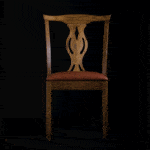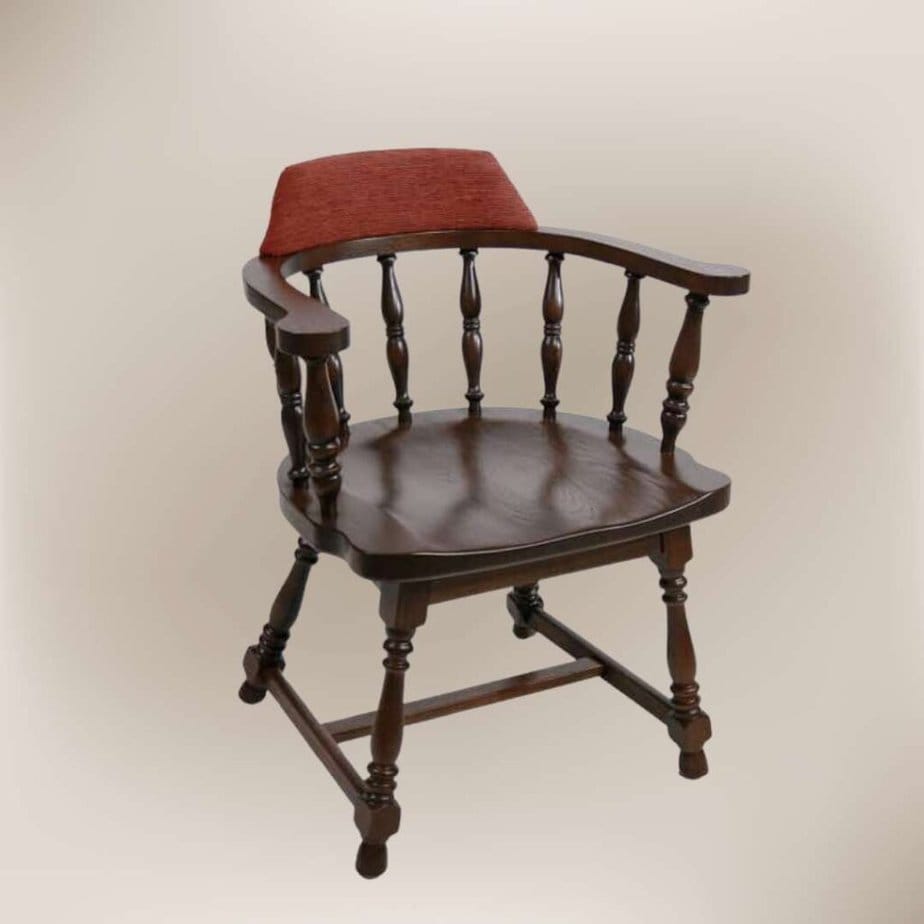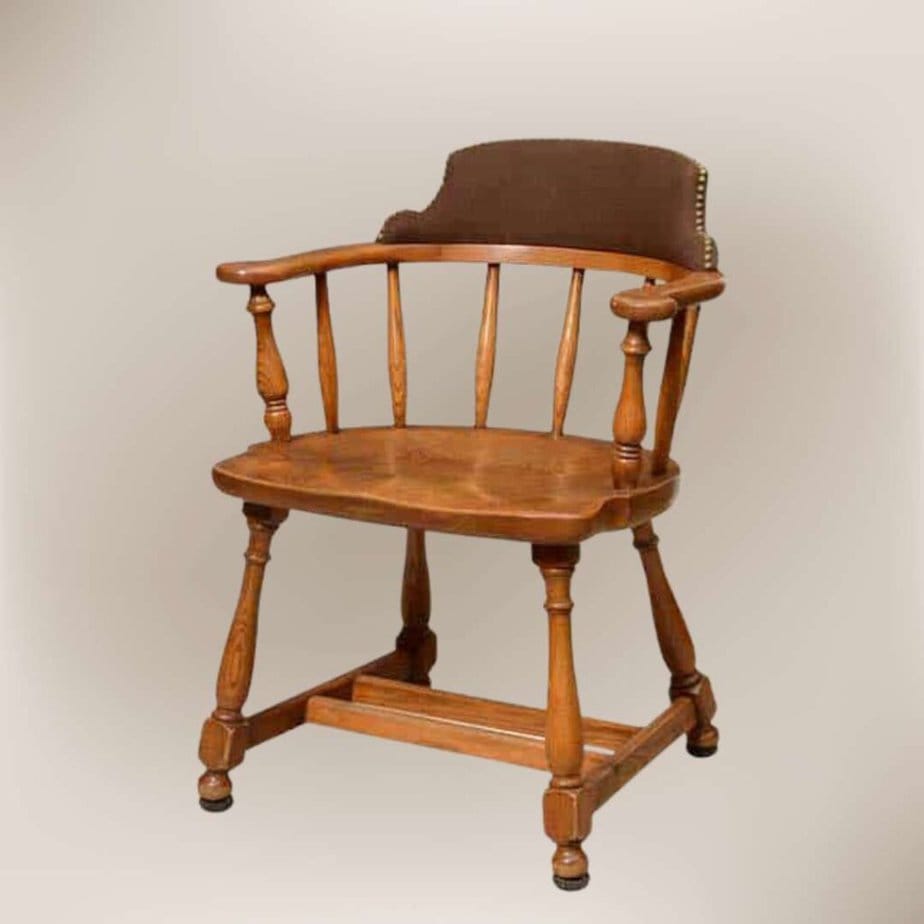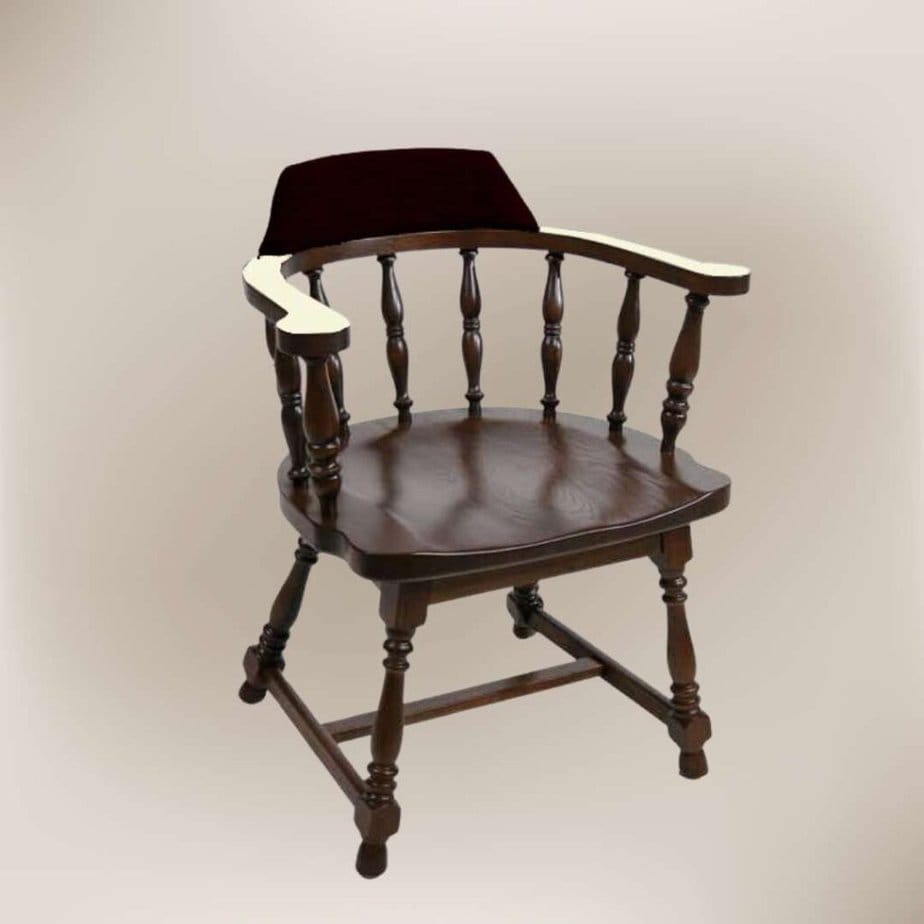In the post-war era of the 1950s, a notable shift occurred in the world of interior design and furniture. The demand for contemporary, artist-made objects was on the rise, no longer confined to the elite seeking one-of-a-kind pieces. It was an era where ordinary homeowners were eager to imbue their living spaces with the flair of unique, handcrafted furnishings. At the forefront of this movement stood the Captain’s Chair, an iconic creation by the visionary artist and woodworker, Wharton Esherick.
Esherick’s Captain’s Chair became more than just a piece of furniture; it was a practical and artistic solution that captured the essence of its time. As an emblem of innovation and accessibility, this chair became one of Esherick’s most marketable creations, defining an era and inspiring countless imitations.
One of the key factors contributing to the Captain’s Chair’s widespread appeal was its production efficiency. Working from Esherick’s original prototype, his skilled collaborator, cabinetmaker John Schmidt, had the capacity to produce six chairs simultaneously. This not only kept production costs down but also made the Captain’s Chair accessible to a broader range of buyers. It was often the first piece that individuals bought to furnish their homes, marking the beginning of a lifelong appreciation for Esherick’s craftsmanship.
In the 1950s, the home of Alice and Lawrence Seiver showcased the Captain’s Chair in all its glory. These chairs flanked a unique, three-legged table designed by Esherick himself in 1957. This image serves as a testament to how Esherick’s limited production pieces and one-of-a-kind creations coexisted harmoniously in the homes of those who admired his work. It was a manifestation of the era’s desire for artistic expression and functional design seamlessly integrated into everyday life.
However, what makes the Captain’s Chair in the Seiver’s home particularly intriguing is that it serves as a prototype for the limited production designs. While the arm ends of the chair in this version are rounded, subsequent iterations took a different approach. This evolution in design reflects Esherick’s commitment to innovation and adaptation, showcasing his ability to refine and perfect his creations over time.
To delve deeper into the significance of the Captain’s Chair, one only needs to look at another example within the collection of the Metropolitan Museum of Art. This exemplifies how Esherick’s work transcended individual homes and became celebrated pieces of art with historical value.
In conclusion, the Captain’s Chair by Wharton Esherick stands as an enduring symbol of an era where contemporary artistry and functionality merged seamlessly. Its accessibility, innovative design, and adaptability made it a staple in homes across America. As we reflect on its legacy, we are reminded of the remarkable craftsmanship and the profound impact Esherick had on the world of furniture design during the mid-20th century.




































